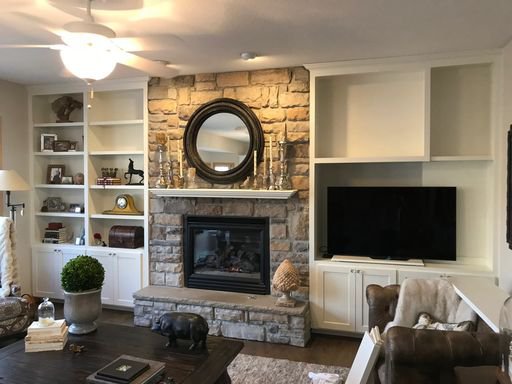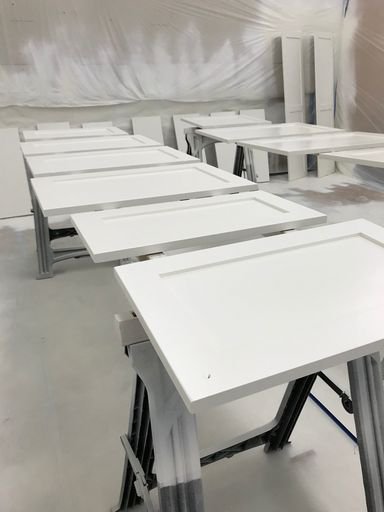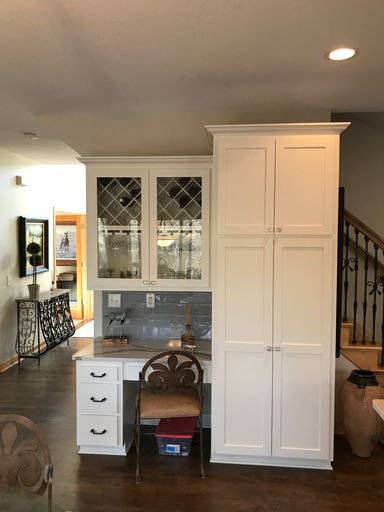Enamel paint is the kind that is hard, glossy and used in quantities that are sparing, much like fingernail polish. Modelers and hobbyists also widely use enamel to add vivid colors and durability to small crafts.
The main purpose of this type of paint is to touch-up appliance surfaces. The good news is that, enamels do not always solely apply to small items.. If you need paint that forms a hard shell and gives you reliable protection, enamel just might be the finish for you.

What Is Enamel Paint?
Enamel paint is more characterized by its qualities than its substance. This type of paint is, in the broadest sense, any solvent-based paint that dries to a smooth, glass-like surface. In contrast to water-based paints, solvent-based paints are also called oil-based paints.
This type of paint springboards off its root words "smelt" or "melt," as true enamel is a glass coating melted or kiln-baked on metal or ceramics at extremely high temperatures. Remember, however, that there are no parallels between the paint version and molten glass enamel, as there is no glass content in this type of paint. Also, conventional baked enamel finishes have nothing to do with glass, traditionally used for cars. Baking is simply an easy way to get rid of solvents and VOCs.
In reality, air-dry enamel colorings are much softer than real enamels in a kiln. Paint manufacturers have expanded the concept further by applying the word enamel to water-based paints at times, thereby removing the one element that typically ties all enamel paints together: solvents.

Enamel Paint's Origin
During the mid-1800s, when less than reliable paints and friable whitewash paints was everywhere, adding the term "enamel paint" to products made a huge difference.
In the minds of customers, Enamel was synonymous with the vitreous shell surfaces of porcelain and ceramic tiles or porcelain bathroom fixtures, both of which are impermeable, sanitary and very strong. A simple workaround to show that this paint was similarly water-resistant and durable was to adapt the concept of painting cookware, tile, sinks, and bathroom enamel.
Fun Fact
Around 1900, Sherwin-Williams began advertising its version of this enamel colorant as the perfect coating for furniture and wickerwork. For a free consultation on color selection with our Sherwin Williams preferred paints, please visit us at www.GoldStandardPainting.com.
In industrial applications, powder coating has largely replaced baked enamel coating. However, the main competition for enamel paint came after the advent of synthetic latex paints during World War II. Today, such type of pain still has some associations with hard-shelled products such as large appliances such as refrigerators and washing machines. The market now has Powder-coated enamels as well.

The Uses of Enamels
For home projects that require either ultra-durability or a glassy, glossy look, brush-on, roll-on, or spray enamel paint. Popular enamel painting uses include:
Refurbishing a Barbecue Grill
Thoroughly clean your barbecue grill's exterior surfaces. Clear the rack from the grill. Coat the barbecue grill twice, using spray paint in a can, with heat-resistant enamel paint.
Painting Door Casing
Door casing gets a lot of abuse. A highly durable paint, which is also easy to clean, therefore makes sense to apply. Clean the door casing with Trisodium Phosphate (TSP). Cover the wall area around the case by taping a plastic sheet with the painter's tape or using masking film that is self-adhesive. Put a drop cloth between the floor and the paint for some protection. Apply to the door casing a minimum of two coats of enamel with a high-quality brush.
Revitalizing Your Outdoor Furniture
After enough time, even hardy outdoor resin furniture can fade. Colorful enamel substance can help bring the furniture back to life in a spray can. For cleaning the furniture, use a pressure washer set at low pressure, or use a water hose, soft brush, and mild detergent. Let the furniture dry completely, then use two enamel paint coats to a superb finish.
Other favorite uses for enamel paint include:
Doors, Window trim, Cabinets, Crown molding, Window sashes, Porches, Floors, Decks, Handrails, Cabinet fixtures, Appliances, Compatible Materials. For your enamel painting projects, contact us at 651-336-7876
